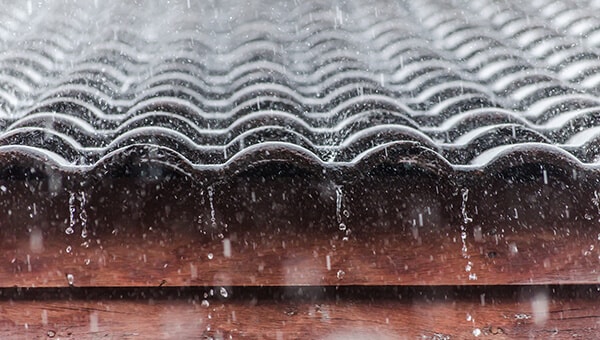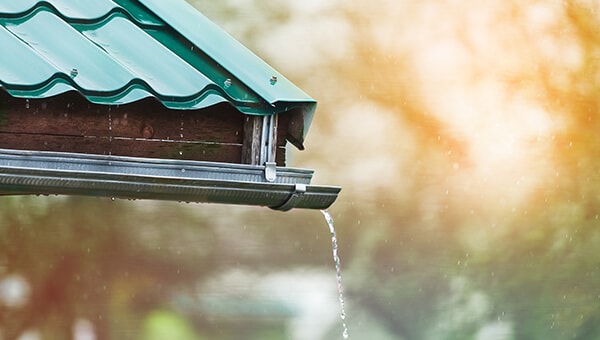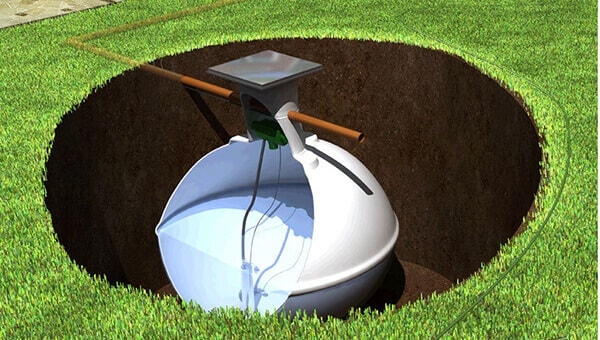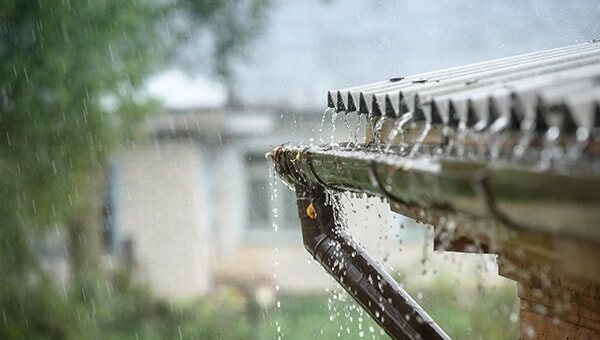In this article, we’ll look at the calculations to make and the things you need to consider when deciding which tank size is appropriate for your property. Before we go too deep into this however, if you are just looking for a simple “at a glance” guide to sizing an integrated rainwater harvesting system tank the following details can work as a general rule of thumb for domestic use:
- 1-2 occupants - limited or no garden irrigation = 1,500 litre tank
- 2-4 occupants - limited or no garden irrigation = 3,000 litre tank
- 4-6 occupants - occasional garden irrigation = 5,000 litre tank
- 4+ occupants - regular garden irrigation = 7,500 litre tank
- 4+ occupants - extensive irrigation or equestrian/farmhouse = 15,000 litre tank
If you intend to use the harvested rainwater just for garden maintenance, it might be more useful to consider the following approximations based on a 100 litre water butt supplying a 1 litre watering can:
- 1 can of water used a day = 100 days’ supply
- 2 can of water used a day = 50 days’ supply
- 3 can of water used a day = 33 days’ supply
- 4 can of water used a day = 25 days’ supply
Of course, as storage and watering can sizes increase, so do the number of days your water supply will last, much as you would suspect. Our full range of water butts and above ground storage tanks can be found here.
So, those are the quick figures that can help give you a rough idea. If, however, you want a rainwater harvesting system that is better optimised to your property and your needs, we need to do a little more work.
The Six Factors of Tank Sizing
Choosing the right size tank for your property may seem like quite a daunting task, especially if you intend to install a below ground tank. That’s why we break it down into these six simple questions:
- Where do you live?
- How big is your roof?
- How many bedrooms does your property have?
- How many people live in the property?
- How much water do you need for your garden?
- How much drought protection do you need?
So let’s work through these one at a time to see how they help you to make a decision.
Where do you live?
The point of this question is to ascertain how much rainfall you are likely to receive in your area. From this we can calculate roughly how much rainwater you can expect to collect. When we combine this information with that from our other questions, it will help us to decide the best tank size for you.
A quick search on the internet for “Average rainfall in [your area]” should give you the figure you need. But for the sake of this article, here are the average annual rainfall figures for some of the main cities in the UK:
- London = 592mm (23.3inch)
- Cardiff = 1152mm (45.4inch)
- Belfast = 861mm (33.9inch
- Edinburgh = 730mm (28.7inch)
- Birmingham = 681mm (26.8inch)
- Manchester = 829mm (32.6inch)
- Newcastle = 651mm (25.6inch)
- Glasgow = 1245mm (49inch)
(these figures are based on average weather data collected between 1981-2010)
How big is your roof?
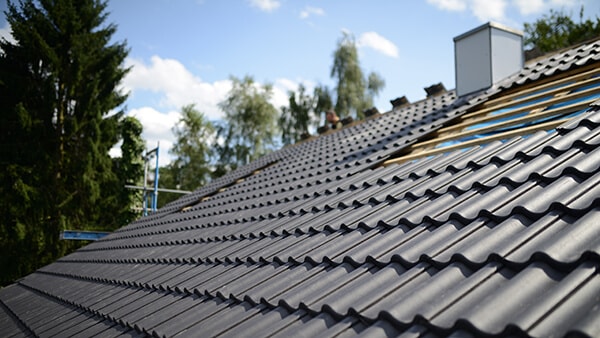
The square meter size of your roof will determine the amount of rainfall you can potentially collect, and is therefore one of the most important questions to answer…it can also be one of the most difficult. If you already have this measurement, or you aren’t afraid of getting up on the roof with a tape measure (please be careful if you do), then you can skip this stage and move on.
If, however, you want to roughly calculate the size of your roof without climbing up a ladder to take the measurements, there is a simpler way. Assuming you have a rectangular shaped house, all you need to do is measure its length and width from ground level and then multiply those two numbers together.
While this calculation isn't as accurate as measuring the roof properly, and it doesn't take into account the pitch (slope) of the roof, it should be good enough for the purpose of working out what size tank you need for rainwater harvesting. For more complex shaped houses though, or if you think you need a more accurate figure in general, it would be worth contacting a member of our team for further advice.
As an example though, here are the average roof sizes of three common house types:
- 2 Bed Terraced House = 55m2
- 3 Bed Semi-detached = 75m2
- 4 Bed Detached = 100m2
We can now use a simple formula to estimate the potential rainwater these properties could harvest. For this calculation we will use the UK average annual rainfall of 885mm (33.7inch) and multiply it by the surface area of our three roofs:
- 2 Bed Terraced House = 48,675 litres of harvested rain per year
- 3 Bed Semi-detached = 66,375 litres of harvested rain per year
- 4 Bed Detached = 88,500 litres of harvested rain per year
Now we know approximately how much rainwater you could collect in your tank, we next need to look at the demand your property would have for it. For this purpose we’ll group questions 3, 4 & 5 together.
How much rainwater do I need?
This largely depends on what you intend to use the water for. If you are looking to simply install a Water Butt for the sake of watering your garden, your rainwater needs are going to be far less than if you are considering a fully integrated system to supply all your non-potable water needs.
Either way it can be tough to calculate, as water usage between people and households varies greatly. If we look at some averages though, it should help to give you an idea of potential use.

The average person can use around to 22.10 litres of water flushing their toilet every day, and a washing machine can use around 50 litres of water per wash on an average cycle. So, this is where the number of people comes into the equation. The more people you have in your house, the more water you are going to use. For example:
The water usage for 1 persons toilet usage and 2 wash-loads per week = 254.70 litres
The water usage for 3 peoples toilet usage and 6 wash-loads per week = 764.10 litres
If we then assume that the average outdoor use of water per person per day is about 5 litres, we can add an additional 35 litres and 105 litres per week respectively to our figures. This would mean that, over a full year, our 1 person household could expect to use around 15,064 litres of rainwater, and our 3 person household could expect to use around 45,193 litres to supply a fully integrated system.
So why do we also need to know how many bedrooms a property has? Well, we know the water needs of our 1 person household, but without knowing how many bedrooms the property has, we can’t know how many people might live there in the future. This isn’t a big deal if you are only installing an above ground system for your garden needs, but if you are committing to the install of a fully integrated system with a below ground tank, it is better to size your tank to the property than just the occupant.
If, for example, you’re a single occupant in a 3 bedroom house and you base your tank size on just your water usage, you might later struggle to get the full benefit of your harvesting system if you start a family.
So, with that in mind, it is worth considering the following potential occupancies in your calculations:
- 2 bed property = 3 people on average = 45,192 litres of required rainwater
- 3 bed property = 4 people on average = 60,257 litres of required rainwater
- 4 bed property = 5 people on average = 75,322 litres of required rainwater
Now that we have an idea on the potential rainfall we could harvest and the amount of stored water we might need, there is one last question to ask.
How much drought protection do you need?
Simply put, if the UK has a very hot summer with little rainfall, potentially resulting in a hosepipe ban, how man days’ supply of stored water do you want in reserve before you have to rely on the mains supply again?
It’s hard to suggest an average number of days you can expect you go without rain in the UK, but it is recommended by most rainwater harvesting calculators that you should plan for 18 days as a minimum. However, a buffer of 21 days is more often recommended as this will cover you for 3 consecutive weeks without rainfall.
And with that question answered, we now have all we need to calculate the most suitable tank size for our properties.
So what size do you need?
Using our first example, we can now assume the following:
1 person in a 2 Bed Terraced House with a 55m2 roof could potentially collect 48,675 litres of rainwater per year and can expect to use 15,064 litres a year to supply their toilets, washing machine and garden. If they want to futureproof their system however, they should increase their expected rainwater requirement to 45,192 litres to cover up to three people living in the property.
To work out the most suitable tank size for this property, we can then do the following calculation:
(Total Rainfall + Total Required Rainfall / 2) x (Drought Buffer/Days in the Year)
(48675 + 15064 / 2) x (21/365) = 1,912 litres for a fully integrated system sized to the occupant
(48675 + 45192 / 2) x (21/365) = 2,816 litres for a fully integrated system sized to the property
Alternatively, if this person just wanted an above ground tank to harvest water for their garden, a more suitable calculation would use just the potential outdoor water requirement as follows:
1820 x (21/365) = 109 litres
Of course, these results are based on averages that very rarely ever match up to real life situations. If this Terraced house had a large garden, or a very keen gardener living there for example, a water butt capable of holding 109 litres of water may not be big enough. Perhaps your house is an unusual shape, or maybe you live in an area of the country with a lower average rainfall. Any number of individual considerations can affect the outcome of these calculations, but they should at least help to give you an idea of what you might need.
JDP has a wide range of Rainwater Harvesting Systems available, and our team is always ready to answer any of your questions and offer advice if you need help choosing the right one for your project. Contact us today to discuss any of your Rainwater Harvesting needs!


